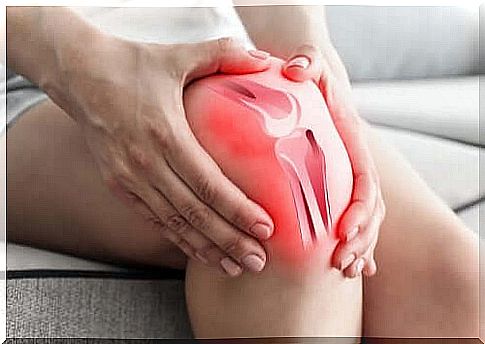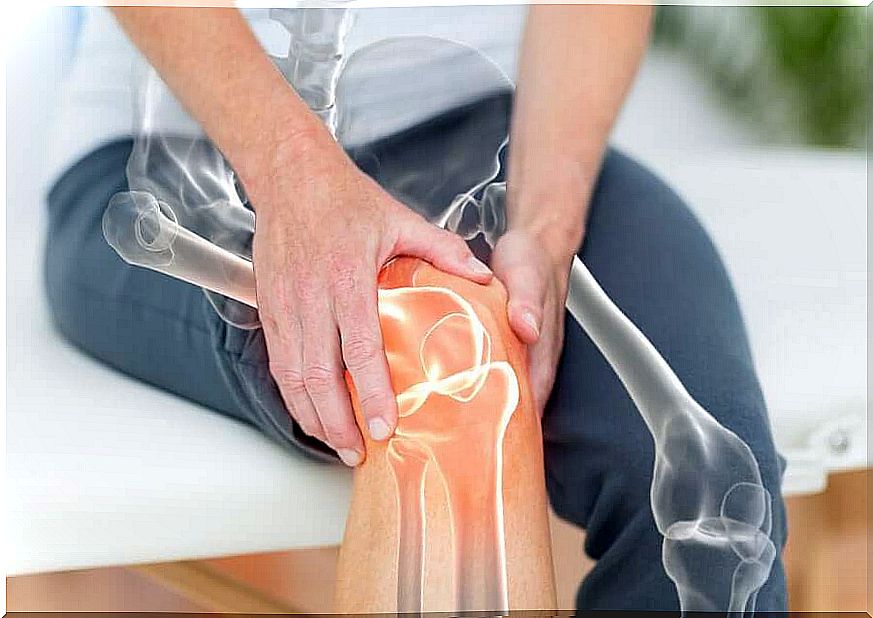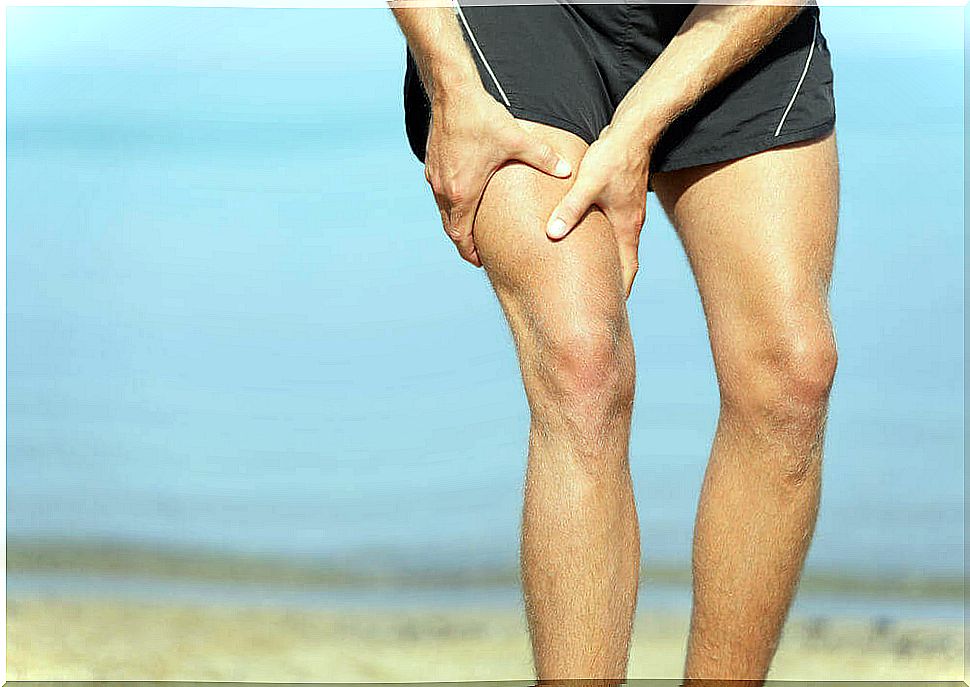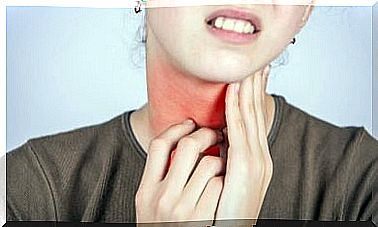Osteoarthritis And Knee Pain
Osteoarthritis triggers an inflammatory process that can affect the ability of the knees to move, in addition to pain. Timely diagnosis and treatment can help delay its progression.

Osteoarthritis or arthritis is a systemic, degenerative disease that can affect any joint in the human body. It often results from the wear and tear of the protective cartilages found at the ends of bones. Does osteoarthritis cause knee pain?
Although there are several conditions and lesions that can affect diseases of this joint, osteoarthritis is the most common chronic condition. Indeed, one of the most common forms of this disease is osteoarthritis of the knee.
Its onset is usually seen in middle-aged and elderly people. It is one of the main causes of disability. However, there are various therapies and treatments that help overcome the pain even though there is no definitive cure to treat the progressive underlying process.
What is osteoarthritis of the knee and why does it cause pain?

In order to understand why osteoarthritis causes knee pain, it is important to address the development of this pathology on the joint. Although any part of the body can be affected, a large number of cases result from the deterioration of the cartilage that covers the bones that are part of the knees.
Articular cartilages are soft, slippery tissues that have the function of covering, protecting and cushioning the ends of the bones of the knee. Therefore, when worn or damaged, the joint loses its ability to flex and move normally.
On the other hand, since an inflammatory process is causing the problem, it triggers chronic pain which increases over time. Therefore, if the person does not take treatment to slow their progress, over time their movement will be limited and they will suffer from more severe symptoms.
How to classify osteoarthritis of the knee?
Osteoarthritis causes knee pain depending on its degree of development. This is why, when establishing a diagnosis, the 3 forms of classification of the disease are taken into account. It is therefore possible to suffer from the following types of osteoarthritis of the knee:
Mild osteoarthritis of the knee
Patients with this type of osteoarthritis only present discomfort after having made significant physical efforts. On the other hand, during a simple x-ray of the knee, there are not always obvious changes.
Moderate osteoarthritis of the knee
In this case, noticeable changes are already seen on an X-ray of the knee. Painful episodes occur after standing for a long time or following moderate exercise. Likewise, symptoms appear and reappear several times a year.
Severe osteoarthritis of the knee
When it has reached a serious state, osteoarthritis causes prolonged pain in the knee. Even after a light effort. Typically, patients experience stiffness and pain for the first 20 minutes of the day, and symptoms subside as the hours go by.
At this stage, episodes of joint effusion with the inflamed knee are regular. Therefore, painful moments are more common and can affect the ability to move. With the x-ray, obvious signs of deterioration of the cartilage can be seen.

Symptoms of osteoarthritis of the knee
The symptoms of a patient with osteoarthritis can vary depending on the degeneration of the cartilage. However, at a general level, the clinical manifestations are pain, inflammation and functional impotence. The latter symptom means the person’s inability to perform all degrees of knee movement.
Inflammation, which is both the reason osteoarthritis causes knee pain, occurs because of excess synovial fluid inside the joint. Therefore, by preventing normal support of the affected lower limb, it limits its movements and reduces the quality of life. In summary, symptoms can include:
- Pain which increases in the morning and which decreases following a period of “warming up” of the knee
- Feeling of stiffness after inactive moments
- Prolonged pain after bending the knees (for example, sitting for a long time)
- Intense pain that gets worse with movement
Why is it important to receive a timely diagnosis?
It is extremely important to take into account that all types of osteoarthritis get worse over time. Therefore, the faster the diagnosis, the better the prognosis and treatment outcome. The doctor may recommend a series of x-rays to confirm the condition.
Thanks to these examinations, it is possible to check the extent of the cartilage damage and to see if the joint space between the bones of the knee has decreased. Once the level of development has been analyzed, the specialist may suggest:
- Lifestyle changes (diet and low impact physical activity)
- Exercises with the physiotherapist
- Weight loss in case of overweight or obesity
- Prescription of analgesic and anti-inflammatory drugs
- Surgery (arthroscopy or joint replacement, only in severe cases)
Ultimately, the reason osteoarthritis causes knee pain is the inflammatory process that results from the wear and tear of joint cartilage. Since this is a progressive disease, it is essential to have access to treatment as early as possible.









